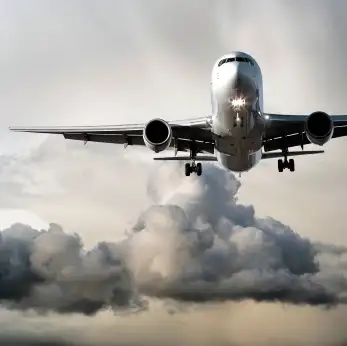
The latest round in the escalating battle pitting would-be merger partners American and US Airways against the anti-merger Department of Justice concerns the timing of the trial where their opposing claims will be litigated.
On Thursday, American filed a motion with the District Court for the District of Columbia requesting a November 13 trial date.
The DOJ, on the other hand, has proposed that the trial date be set 180 days after the agency’s initial complaint, which would be in February 2014.
It’s good for the traveling public that this merger is being challenged. Consolidation is undoubtedly good for the industry. But aside from expanded route networks, there are no consumer benefits from mergers. Indeed, reducing the number of competitors will lead to higher prices and less incentive to innovate and improve service.
But the challenge must be expeditious. The legal wrangling has been costing American $500,000 a day in lawyers’ and other professional fees, and will continue to do so until the merger and bankruptcy issues are resolved. The uncertainty regarding the industry’s future make-up has roiled the market for airline stocks. The 120,000 employees of the two airlines deserve to know who they’ll be working for. And the airlines’ customers are left to wonder, among other things, which program their frequent-flyer miles will ultimately reside in.
There’s a lot at stake here, for many people. Clarity needs to be achieved, and achieved as soon as possible.
According to American, “The DOJ request for 180 days, especially with one of the parties in bankruptcy, however, would be unprecedented and unreasonable in the circumstances. Based on the DOJ merger cases litigated to a decision since 2001, the average time from the DOJ’s complaint to trial is 70 days.”
Word.
Merger Cheat Sheet
- The new company would retain the “American Airlines” name and be based at American’s Ft. Worth headquarters.
- US Airways chief Doug Parker will be the new CEO. American chief Tom Horton will be named chairman of the new board and remain in that position until the spring of 2014 when the company’s first annual shareholder meeting will be held. When Horton departs the board, Parker will assume his position as chairman.
- American’s creditors would own around 72 percent of the new company; US Airways shareholders would get the rest.
- Based on 2012 results, the new company would have generated $38.7 billion in revenue.
- The merger is expected to generate around $1 billion in combined extra revenue and cost savings for the new company.
- The new company will be valued at around $11 billion.
- Combining the third- and fifth-largest U.S. carriers will create the world’s largest airline, in terms of passenger traffic.
- Prior to any post-merger rationalization, the two airlines will have around 120,000 employees, 950 planes, 6,500 daily flights, and eight major hubs (American: Dallas, Miami, Chicago, Los Angeles, New York; US Airways: Phoenix, Philadelphia, Charlotte). Although the carriers promise to maintain all current hubs, Phoenix and Philadelphia are likely to be downsized in the post-merger “rationalization.”
- The new American will be a member of the oneworld alliance, not the Star Alliance.
- The merger is subject to review and approval by U.S. regulators. That wasn’t expected to be a problem since there is relatively little overlap between the two airlines’ networks.
- The actual merger won’t happen overnight. United and Delta required five and seven months respectively to secure the necessary approvals for their mergers.
- It was 22 months after their merger closed before United and Continental finally merged their frequent flyer programs. Expect a similar post-close interval before American and US Airways consolidate their programs.
- Comparisons between American and US Airways’ current mileage programs are probably moot since there’s a high likelihood that an entirely new revenue-based program (like Southwest’s) will be introduced to replace both programs.
- After the merger, 83 percent of U.S. domestic air traffic will be in the hands of just four airlines (American 26 percent, United 19.3 percent, Delta 19.2 percent, Southwest 17.3 percent).
Reader Reality Check
If it were up to you, would you schedule the trial sooner, or later?
This article originally appeared on FrequentFlier.com.
We hand-pick everything we recommend and select items through testing and reviews. Some products are sent to us free of charge with no incentive to offer a favorable review. We offer our unbiased opinions and do not accept compensation to review products. All items are in stock and prices are accurate at the time of publication. If you buy something through our links, we may earn a commission.
Related
Top Fares From Columbus, OH
Today's Top Travel Deals
Brought to you by ShermansTravel
Shop and Save with Country Inns...
Patricia Magaña
 Hotel & Lodging Deals
Hotel & Lodging Deals
$229 -- Chicago: Discounted Rates and...
Francesca Miele
 Hotel & Lodging Deals
$229+
Hotel & Lodging Deals
$229+
$188 -- Honolulu: Save on Oceanview...
Abigail Lamay
 Hotel & Lodging Deals
$188+
Hotel & Lodging Deals
$188+



